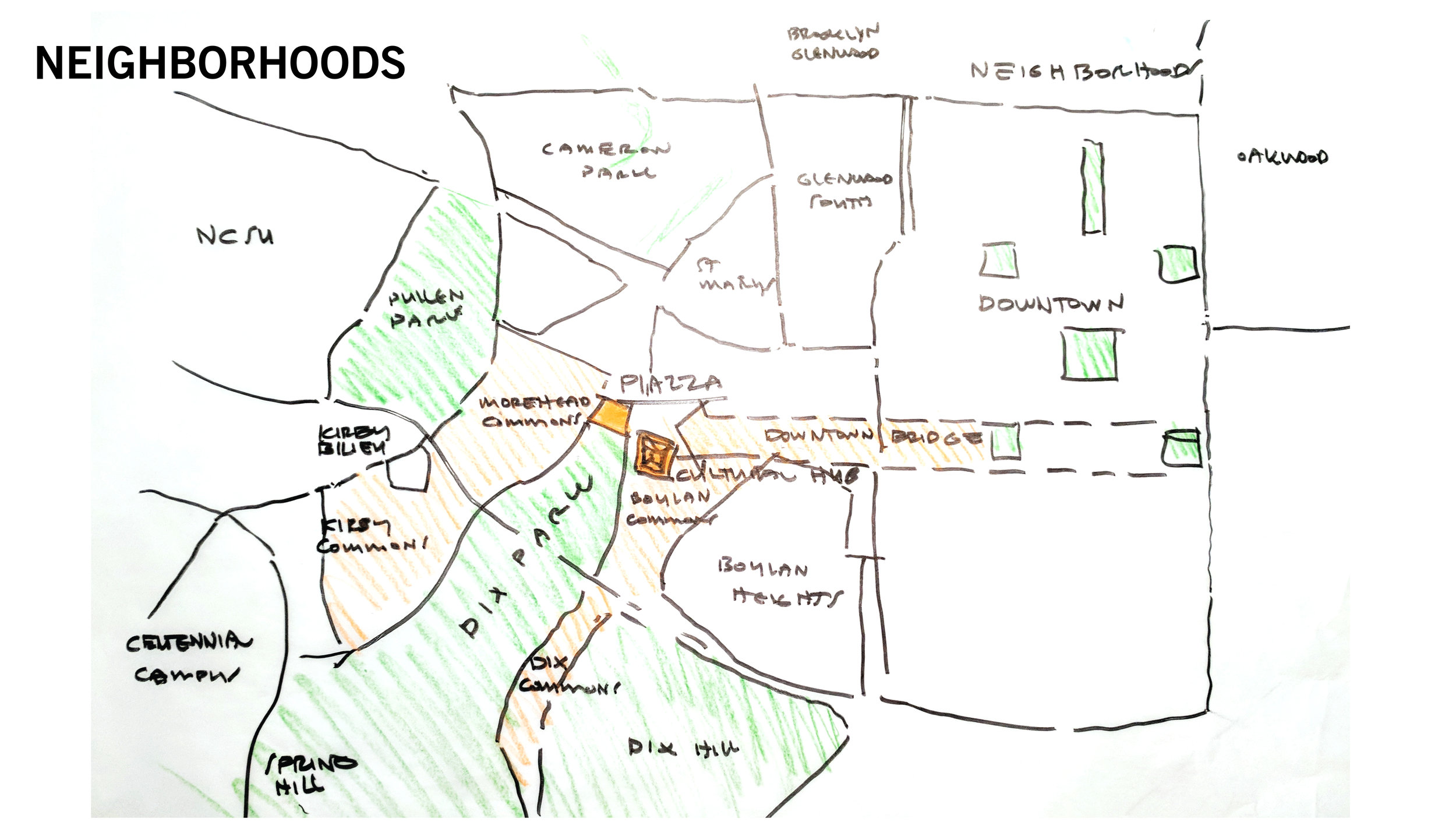COMMON LAW
Team Members:
Sarah Dickerson, Adam Glaser, Torey Kiss, Kenneth Luker, Smith Marks, Michael Samuelian, Michael Stevenson, Anna Totten, John Totten
Successful urban parks around the world share one attribute; they are surrounded by active uses and active edges. This allows the parks to serve not only as open space but also as connective tissue, a way for people to move around between destinations throughout the city, further activating the park.
Our team’s design addresses the larger context of the site and the nature of the future Dix Park, namely it’s isolation from its surrounding context. We believe that in order to maximize the benefit of the park to the city that it must be physically engaged with active uses on all of its perimeter, and not separated by wide, heavily trafficked roads as it is today.
To solve this problem we proposed a land swap, extending Dix Park north of Western Boulevard into the site to connect to Morgan Street and downtown, and extending new neighborhood development south of Western Boulevard to create active edges on Dix Park.
The second big idea of the plan is the extension of Martin and Hargett Streets from Nash Square in downtown Raleigh to the heart of the site, with a platform over the rail yards supporting new development. These two streets would connect to a new public piazza next to a new iconic cultural facility nestled within the historic stone walls of Central Prison.
When realized, this plan would unite downtown Raleigh, Hillsborough Street, Boylan Heights, Pullen Park, the North Carolina State University Central and Centennial campuses, and the rest of the immediate context with Dix Park in a seamless, walkable and diverse urban environment.





